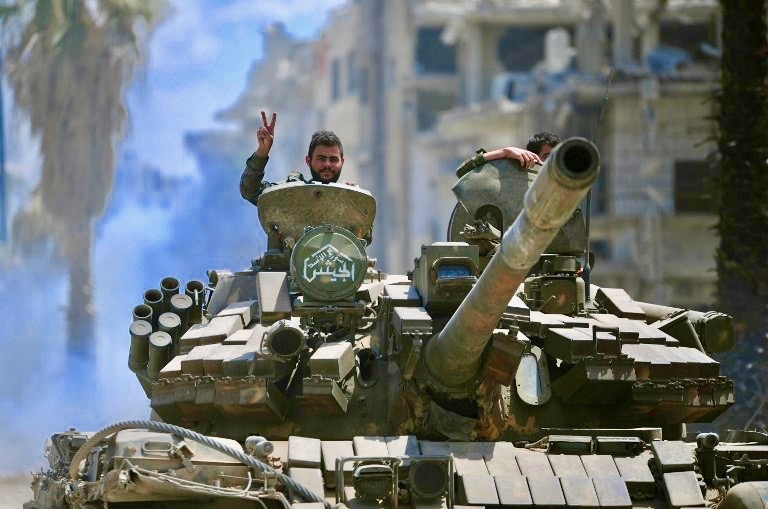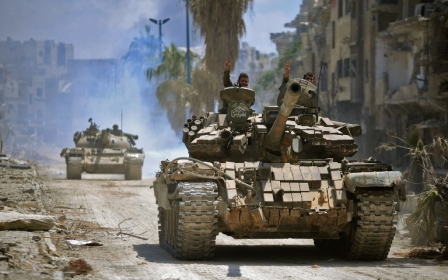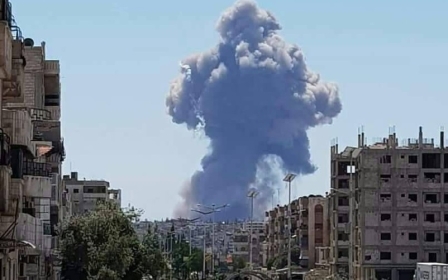Syria seeks to crush Islamic State pocket and denies evacuation deal

Syrian troops fought on Sunday to crush the last pockets of resistance by Islamic State (IS) group militants trapped in an enclave south of Damascus, state media said, denying a report that rebels had begun leaving in a withdrawal agreement.
The recovery of the enclave south of Damascus would mark another milestone in President Bashar al-Assad's war effort, taking the last besieged rebel enclave in western Syria.
Swathes of territory at the borders with Iraq, Turkey and Jordan, however, remain outside state control.
Syrian government forces and their allies have been battling to recover the enclave south of Damascus since defeating rebels in eastern Ghouta, also near the capital, in April.
The area is centred around the al-Hajar al-Aswad district and the adjoining Palestinian refugee camp of Yarmouk, the largest in Syria.
The month of battles have been the toughest fought by the Syrian army and its allied forces this year against opposition forces in pockets around the capital, defence experts say.
Despite extensive use of air power that has left many parts of the area levelled to the ground, troops and allied militias have sustained heavy losses as they encounter tough resistance from diehard militants waging a battle to the end.
In a live broadcast, a reporter with Syrian state TV said the Syrian army operations in the Hajar al-Aswad area were nearing their end and rebel lines were collapsing as columns of smoke rose from the area behind him.
Syrian state news agency SANA said troops were about to close in on militants holed up in a small area of high-density buildings north of Hajar al-Aswad.
"The fighting skills of the army are foiling all the efforts by the terrorists to prevent the army from completing the liberation of the area," SANA said.
The Syrian Observatory for Human Rights earlier said that buses had entered the enclave after midnight to take out IS militants and their families. They had left towards the Syrian Badia, a sparsely populated expanse of territory east of the capital that extends to the border with Jordan and Iraq, it said.
IS militants had torched their offices in the Yarmouk enclave, the Observatory said.
Negotiated withdrawals have been a common feature of the Syrian war in recent years as the government, aided by the Russian military and Iran-backed forces, has steadily clawed back territory.
The rebels have mostly been given safe passage to northwestern Syria. In the last two months alone, the United Nations says 110,000 people have been evacuated to northwestern Syria and rebel-held areas north of Aleppo.
The opposition has called it a policy of forced displacement amounting to demographic change to drive out Assad's opponents. The Syrian government has said nobody is forced to leave and those who stay must accept state rule.
While Assad has vowed to win back "every inch" of Syria, the map of the conflict suggests a more complicated time ahead from now on.
The US military is in much of the east and northeast, which is controlled by Kurdish groups that want autonomy from Damascus. It has used force to defend the territory from pro-Assad forces.
Turkey has sent forces into the northwest to counter those same Kurdish groups, carving out a buffer zone where anti-Assad rebels have regrouped.
In the southwest, where rebels hold territory at the Israeli and Jordanian border, Assad faces the risk of conflict with Israel, which wants his Iranian-backed allies kept well away from the frontier and has mounted air strikes in Syria.
Middle East Eye propose une couverture et une analyse indépendantes et incomparables du Moyen-Orient, de l’Afrique du Nord et d’autres régions du monde. Pour en savoir plus sur la reprise de ce contenu et les frais qui s’appliquent, veuillez remplir ce formulaire [en anglais]. Pour en savoir plus sur MEE, cliquez ici [en anglais].




